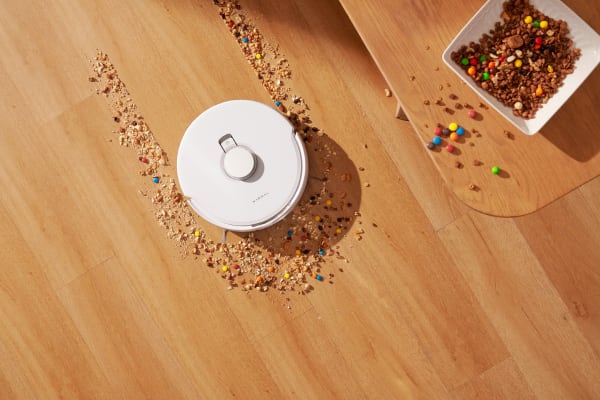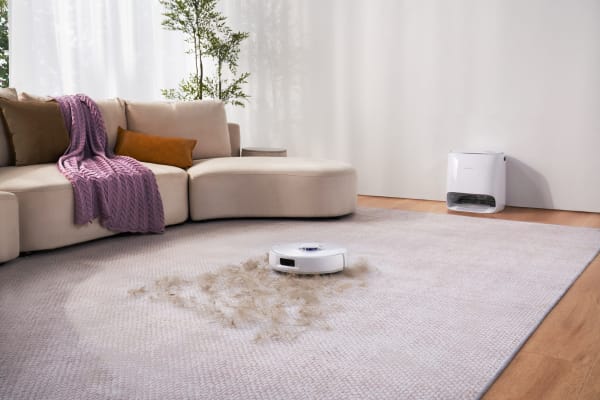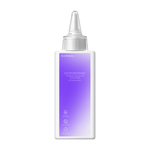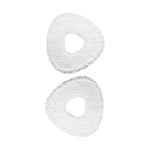What is a good suction power for a vacuum cleaner?It depends on your home’s flooring, cleaning needs, and vacuum type—but generally, good suction ranges from 180–250 AW or 2,500–6,000 Pa for everyday cleaning, and up to 20,000 Pa for tough messes.
This guide breaks down everything you need to know. First, you'll learn how suction power works and what levels are ideal for different surfaces like hardwood, carpet, and tile, as well as for pet hair, large debris, or fine dust. Then, we’ll cover the best suction ranges for upright, canister, stick, handheld, and robot vacuums. You’ll also get tips on how to choose the right suction power for your home, based on room size, flooring type, and debris. We’ll explain the key factors affecting suction—like airflow, filters, and motor design—and how to maintain peak performance over time.
Finally, we’ll recommend top-rated robot vacuums with strong suction across various budgets and cleaning needs. Let’s help you find the perfect vacuum that cleans efficiently, without overpaying or overcomplicating.
What Is Suction Power in a Vacuum Cleaner?
Suction power in a vacuum cleaner is simply how strong the vacuum's airflow is in pulling dirt and debris into the dustbin. It’s usually measured in air watts (AW) or pascals (Pa). A vacuum with higher suction power will be more effective at picking up dirt, especially on carpets and thick rugs, while a lower suction level may work fine for lighter tasks like cleaning hardwood floors or quick pickups.
If you would like to learn more about robot vacuum suction, click here.
How Is Suction Power Measured?
Now, you might wonder, how do we measure this suction power? There are a few key terms to understand:
- Air Watts (AW): This is the most common measure for traditional vacuums, combining both suction strength and airflow. Higher air watts mean stronger suction.
- Pascals (Pa): This measures the suction force itself, often used for robot vacuums. The higher the Pa value, the stronger the suction force.
- Water Lift (inH2O): This tells you how much force the vacuum has by measuring how high it can lift a column of water. This is used in more industrial models.
These measurements help us understand how powerful a vacuum really is. But remember, suction power isn’t just about numbers—it’s about how well the vacuum works on your floors and cleaning tasks.
What Are the Ideal Suction Power Levels for Different Surfaces and Cleaning Needs?
Choosing the right suction power depends not only on your vacuum type, but also on what you’re cleaning. Different surfaces and types of debris require specific suction levels to achieve the best cleaning results. In this section, you’ll find a quick-reference table and expert tips to help you match suction power to your exact cleaning scenarios—from dust on hard floors to sticky messes or pet hair embedded in carpets.
Recommended Suction Power by Cleaning Scenario
|
Surface or Debris Type |
Recommended Suction Power |
Notes |
| Hard Floors (wood, tile) | 100–150 AW / 800–1,200 Pa | Moderate suction prevents scattering fine dust |
| Low to Medium Pile Carpet | 180–200 AW / 1,400–1,600 Pa | Sufficient for everyday dirt and dust |
| High-Pile or Thick Carpet | 220–250 AW / 1,700–2,000+ Pa | Higher suction lifts embedded debris |
| Curtains or Delicate Rugs | 100–150 AW / ~1,000 Pa (adjustable) | Lower suction avoids damage; adjustable power preferred |
| Pet Hair on Carpet/Furniture | 250+ AW / 3,000–6,000 Pa | Strong suction plus motorized brush recommended |
| Large Debris (crumbs, leaves) | 200–250 AW / 2,500–3,000 Pa | High airflow important to avoid clogs |
| Dust and Fine Particles | 180–200 AW / 2,500–6,000 Pa | Balance of suction and filtration is key |
| Wet or Sticky Messes | 15,000–20,000 Pa | Wet-dry vacuums like S20 Pro or Flow perform best in these cases |
Tips Based on Use Case
- For pet owners: Look for vacuums with over 250 AW or 3,000+ Pa and motorized, anti-tangle brushes. These features ensure hair is lifted from carpet and upholstery without clogging the brushroll.
- For delicate fabrics: Choose models with adjustable suction to prevent damage. Curtains, linen rugs, or sheer upholstery require gentle handling.
- For multi-surface homes: Consider vacuums with intelligent suction adjustment or multiple power modes to shift between hard floors and carpet seamlessly.
What Is a Good Suction Power for Each Vacuum Type?
When comparing vacuum types, knowing what is a good suction power for each one helps you make the right choice. Upright vacuums need strong suction for carpets, while handheld and stick models work with less. Robot vacuums vary the most—entry models handle dust, and high-end models like the Narwal Flow reach deep into carpets.
Upright Vacuums
These are built for deep cleaning, especially on carpets. The best suction power is 180–200 AW or 1,400–1,600 Pa. Ideal for homes with large floor areas or high-pile carpets.
CanisterVacuums
Designed for versatility on both hard floors and carpets. Recommended suction power is 220–250 AW or 1,700–2,000 Pa. Great for homes with mixed flooring and tight corners.
CordlessStickVacuums
These are lightweight and good for daily cleaning. The best suction range is 100–150 AW or 800–1,200 Pa. Suitable for small messes, hard floors, and quick spot cleaning.
Handheld Vacuums
Best for cars, upholstery, and small areas. Suction power between 20–50 AW or 160–400 Pa is enough for light tasks like removing crumbs and pet hair.
Robot Vacuums
For autonomous daily cleaning, the best suction is 2,500–6,000 Pa. Premium models, such as the Narwal Flow or Narwal Freo Z10 Ultra, reach up to 12,000–20,000 Pa for deeper carpet and pet hair removal.
|
Vacuum Type |
Recommended Suction Power |
Suitable For |
| Upright | 180–200 AW / 1,400–1,600 Pa | Deep cleaning carpets, large floor areas |
| Canister | 220–250 AW / 1,700–2,000 Pa | Mixed floors, tight spaces |
| Cordless Stick | 100–150 AW / 800–1,200 Pa | Quick cleanups, hard floors |
| Handheld | 20–50 AW / 160–400 Pa | Cars, furniture, pet hair |
| Robot (Standard) | 2,500–6,000 Pa | Daily cleaning, hard floors, low-pile carpets |
| Robot (High-End) | 12,000–20,000 Pa | Pet hair, thick carpets, deep cleaning |
How to Choose the Good Suction Power for Your Vacuum Cleaner

Choosing the right suction power for your vacuum depends on your home’s size, flooring types, and cleaning tasks. Here’s how to make the right choice.
For larger homes or those with thick carpets, you need a vacuum with stronger suction. High suction is essential for lifting dirt from deep carpets. For hard floors, moderate suction is enough. A vacuum with adjustable suction is ideal if you have different flooring types.
For cordless vacuums, stronger suction can drain the battery faster. If you need longer cleaning sessions, choose a vacuum with long battery life and adjustable suction. For smaller homes or quick cleanups, moderate suction and shorter battery life will work fine.
Noise is another factor to consider. Higher suction usually means more noise. If noise is a concern, look for vacuums with quiet motor technology. Check the decibel rating to ensure it suits your needs.
Finally, consider your budget. Vacuums with moderate suction (around 150-200 AW or 1,200-1,600 Pa) are often sufficient for most homes and are more affordable. Focus on the features that matter most to your cleaning needs.
Factors That Influence Suction Power in a Vacuum Cleaner
Several key elements contribute to how effectively a vacuum picks up dirt, dust, and debris. Let’s take a closer look at the main factors that influence suction power, starting with the motor power, airflow, and filter systems, which are essential for maintaining strong suction.

Motor Power and Efficiency
The motor is the driving force behind a vacuum's suction. A powerful motor generates the suction that pulls dirt into the vacuum, but the efficiency of that motor also matters. An efficient motor maximizes suction while using less energy, which means better performance and longer battery life (in cordless models). So, while a vacuum with a higher-wattage motor may offer stronger suction, it’s the motor's efficiency that ensures consistent power without draining too much energy.
Airflow and Filtration System
Airflow is a critical component of suction power. A vacuum’s ability to maintain strong suction depends on how well it allows air to flow through the system. If the airflow is restricted due to clogged filters or poor design, the suction power will decrease. An effective filtration system is essential, especially for picking up fine dust particles. However, it’s important to balance suction with filtration. For example, HEPA filters trap tiny dust particles but should not hinder the overall airflow. A vacuum with good airflow and an efficient filter system will provide optimal cleaning power.
Design and Build Quality of the Vacuum
The design and build quality of a vacuum can greatly affect its suction power. Poorly designed air ducts, long hoses, or narrow nozzles can restrict airflow, reducing suction efficiency. A vacuum with a smooth air path, optimized nozzle design, and durable construction will allow for better airflow and improved suction. High-quality materials and precise engineering ensure that air can flow freely, enhancing the vacuum’s overall cleaning performance.
Brushroll and Nozzle Design
The brushroll and nozzle play a significant role in how effectively a vacuum lifts dirt from surfaces. A motorized brushroll is especially beneficial for deep carpet cleaning, as it agitates dirt and debris before the suction power picks it up. The nozzle design is also important: if it doesn’t create a tight seal to the floor or carpet, suction can be lost. A well-designed nozzle helps maintain a strong seal, ensuring that the suction remains strong and dirt is pulled into the vacuum.
How to Maintain or Maximize Suction Power in Your Vacuum Cleaner
To keep your vacuum performing well, regular maintenance is essential. Here’s how you can maintain or maximize suction power.

Clean or replace the filter regularly. To clean the filter, remove it from the vacuum and tap it gently to remove loose dust. If the filter is washable, rinse it under warm water, ensuring it’s completely dry before putting it back. If the filter is damaged or clogged beyond cleaning, replace it with a new one to restore suction.
Clear the brushroll of hair and debris. Remove any hair wrapped around the brushroll using scissors or your hands. Check the brushroll regularly to ensure it spins freely, which is important for effective carpet cleaning.
Check the hose and nozzle for blockages. Detach the hose and inspect it for clogs. If you notice any debris, use a broomstick or similar tool to push it out. For the nozzle, check for obstructions and clean it with a cloth or an air compressor.
Replace the belt if necessary. To check the belt, remove the brushroll and inspect the belt for wear or breakage. If it looks damaged, replace it by following the vacuum’s manual instructions. A new belt ensures the brushroll spins properly and maintains suction.
Consider replacing the motor if suction is still weak. If the vacuum’s motor is no longer working efficiently, you may need to replace it. Consult your user manual or a professional to determine if motor replacement is necessary.
Use a vacuum with adjustable suction. If your current vacuum doesn’t have adjustable suction, consider upgrading to one. This feature allows you to lower suction for light cleaning tasks, which saves energy, or boost it for deep carpet cleaning.
Top Robot Vacuums with Strong Suction for Every Need
Looking for a vacuum that actually lifts the dirt you see—and the dust you don’t? Whether you have pets, kids, or just want a deep clean on tiles, timber, or carpet, here are three top-rated Narwal vacuums to suit different Aussie homes.
|
Product |
Best for |
Suction Power |
Key Features |
|
Narwal Flow |
Max power & coverage | 22,000 Pa | Edge-to-edge cleaning, auto dirt sensing, ideal for large households |
|
Freo Z10 Ultra |
Smart & balanced | 18,000 Pa | Floor type detection, mop self-cleaning, dual scrubbing pads |
|
S20 Pro |
Hard floors & wet messes | 20,000 Pa | Wet-dry cleaning, real-time DirtSense, 149°C self-drying brush |
Narwal Flow – For Deepest Clean on Every Surface
With 22,000 Pa suction, Narwal Flow leads the pack in raw power. It’s perfect for larger homes or families with active kids where food crumbs, sand, and pet hair are a daily battle. From rugs to tiles, its AI DirtSense™ tech adapts to how dirty the floor is, saving battery while cleaning deeply.
[cta:narwal-flow-robot-vacuum-mop]
Freo Z10 Ultra – Smart Choice for Mixed Flooring
This 2-in-1 robot vacuum and mop delivers 18,000 Pa suction and uses floor detection to automatically adjust suction and mop pressure. It’s a great match for homes with both carpeted and hard floor areas. The self-cleaning mop pads and 2.5L dust storage mean less manual effort.
[cta:narwal-freo-z10-ultra-intelligent-in-mind-deep-in-clean]
S20 Pro – Power Meets Convenience on Hard Floors
For kitchens, hallways, and open-plan living, S20 Pro offers 20,000 Pa suction in a cordless wet-dry format. It lifts sticky messes, dries fast, and cleans itself with heated air—ideal for quick clean-ups after meals or muddy shoes. No fuss, just clean floors.
[cta:narwal-s20-pro-vacuum-mop]
Is 20,000 Pa Suction Power Sufficient for a Vacuum Cleaner?
Yes, 20,000 Pa suction power is very strong and suitable for deep cleaning, especially on carpets and larger debris.
Is 600 Watts of Power Good for a Vacuum Cleaner?
600 watts is a moderate power level. While it can be sufficient for light cleaning, vacuums with higher wattage generally offer better suction for deep cleaning, especially on carpets.
What is Considered a Strong Vacuum Cleaner?
A vacuum with 180-250 AW or 2,500-6,000 Pa suction power is generally considered strong and effective for most cleaning tasks.
What Does 20 kPa Suction Mean?
20 kPa (kilopascals) refers to the suction pressure of the vacuum. A 20 kPa vacuum has strong suction power, making it ideal for cleaning deep dirt and debris.
What is the Normal Suction Range for a Vacuum Cleaner?
For a regular vacuum cleaner, the suction power usually ranges from 1,200 Pa to 2,500 Pa for robotic vacuums and 180-300 AW for traditional models.
Why Do Robot Vacuums Lose Suction?
Robot vacuums lose suction due to clogged filters, a full dustbin, tangled brushrolls, blockages, or worn-out parts.
You can learn its details by reading: why robot vacuum lose suction and solutions
Conclusion: Choose the Right Suction Power for Your Home
Understanding what a good suction power is for your vacuum cleaner makes all the difference in how well your home is cleaned. From light daily dusting to deep carpet refreshes, matching the suction to your surfaces and debris types ensures better results with less effort.
Whether you’re leaning toward a high-performance robot vacuum like the Narwal Flow or a versatile cleaner like the S20 Pro, focusing on suction power helps you clean smarter—not harder.
Still unsure which model fits your space?Visit Narwal Australia Official orbrowse top robot vacuums with strong suction to find the right fit for your home.























































